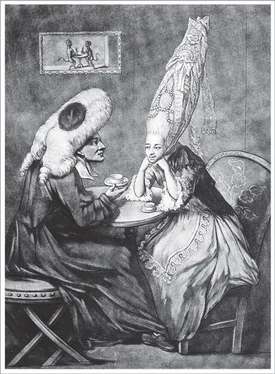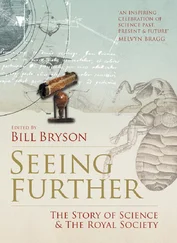Bill Bryson - At Home
Здесь есть возможность читать онлайн «Bill Bryson - At Home» весь текст электронной книги совершенно бесплатно (целиком полную версию без сокращений). В некоторых случаях можно слушать аудио, скачать через торрент в формате fb2 и присутствует краткое содержание. Жанр: Старинная литература, на английском языке. Описание произведения, (предисловие) а так же отзывы посетителей доступны на портале библиотеки ЛибКат.
- Название:At Home
- Автор:
- Жанр:
- Год:неизвестен
- ISBN:нет данных
- Рейтинг книги:4 / 5. Голосов: 1
-
Избранное:Добавить в избранное
- Отзывы:
-
Ваша оценка:
- 80
- 1
- 2
- 3
- 4
- 5
At Home: краткое содержание, описание и аннотация
Предлагаем к чтению аннотацию, описание, краткое содержание или предисловие (зависит от того, что написал сам автор книги «At Home»). Если вы не нашли необходимую информацию о книге — напишите в комментариях, мы постараемся отыскать её.
At Home — читать онлайн бесплатно полную книгу (весь текст) целиком
Ниже представлен текст книги, разбитый по страницам. Система сохранения места последней прочитанной страницы, позволяет с удобством читать онлайн бесплатно книгу «At Home», без необходимости каждый раз заново искать на чём Вы остановились. Поставьте закладку, и сможете в любой момент перейти на страницу, на которой закончили чтение.
Интервал:
Закладка:
Patches at least were not toxic, and as such were almost the only beauty aid in centuries that wasn’t. There was in England a long tradition of poisoning oneself in the name of beauty. Pupils could be attractively dilated with drops of belladonna, or deadly nightshade. Most dangerous of all was ceruse, a paste made of white lead and commonly known as paint. Ceruse was very popular. For females with smallpox scars it was applied as a kind of spackle, to fill in the divots, but even many women who were free of blemishes used it to give themselves a lovely ghostly pallor. Ceruse remained popular for a remarkably long time. The first reference to it as a cosmetic is in 1519 when it was recorded that women of fashion “whyte their face, necke and pappis [which is to say breasts] with cerusse.” In 1754, the Connoisseur , a periodical, was still marveling that “every lady you meet is besmeared with unguent ceruss and plaister.” Ceruse had three principal drawbacks: it cracked when the wearer smiled or grimaced, after a few hours it turned gray, and if used long enough it could kill. At the very least, it could make eyes swell painfully and teeth loosen and fall out. At least two well-known beauties, the courtesan Kitty Fisher and the socialite Maria Gunning, Countess of Coventry, are said to have died from ceruse poisoning, both while only in their twenties, but no one can begin to guess how many others may have had their lives shortened or constitutions unsettled by their attachment to ceruse.
Toxic potions were popular, too. Well into the nineteenth century, many women drank a concoction called Fowler’s Solution, which was really just dilute arsenic, to improve their complexions. Dante Gabriel Rossetti’s wife, Elizabeth Siddal (who is best remembered as the model for the drowned Ophelia in the painting by John Everett Millais), was a devoted swallower of the stuff, and it almost certainly contributed to her early death in 1862.*
Men wore makeup too, and indeed for a century or so were inclined to display breathtaking effeminacy, sometimes in the most unexpected circumstances. Louis XIV’s brother, the Duc d’Orléans, “in spite of being one of history’s most famous sodomites,” in the startlingly forthright words of the historian Nancy Mitford, was a brave soldier, but an unorthodox one. He would arrive at the battlefield “painted, powdered, all his eyelashes stuck together, covered with ribbons and diamonds,” Mitford wrote in The Sun King . “He would never wear a hat for fear of flattening his wig. Once in action he was as brave as a lion, only afraid of what the sun and dust might do to his complexion.” Men as well as women festooned their hair with plumes and feathers, and tied ribbons to each bouncing curl. Some men took to wearing high-heeled shoes—not clunky platform shoes, but slender, spiky heels up to six inches high—and to carrying furry muffs to keep their hands warm. Some carried parasols in the summer. Nearly all drenched themselves in perfume. They became known as macaronis, from a dish they first encountered on Italian tours.
So it is curious that the people who actually brought some restraint to matters—namely, the macaronis’ rival sartorial tribe, the dandies—have become associated in the popular consciousness with overdress. Nothing, with respect to male attire, could be further from the truth, and the quintessence of that muted splendor was George “Beau” Brummell, who lived from 1778 to 1840. Brummell was not rich or talented or blessed with brains. He just dressed better than anyone ever had before. Not more colorfully or extravagantly, but simply with more care.
He was born in reasonably privileged circumstances on Downing Street, his father a trusted adviser to the prime minister, Lord North. Brummell went to Eton and, briefly, to Oxford, before taking up a position in the military in the Prince of Wales’s regiment, the Tenth Hussars. If he had any aptitude for command in battle, it was never tested; his function essentially was to look good in uniform and to act as a kind of companion and assistant to the prince at formal gatherings. In consequence, he and the prince became close friends.
Brummell lived in Mayfair, and for some years his house was the epicenter of one of the more improbable rituals in London’s history—that of a procession of grown men of great eminence arriving each afternoon to watch him dress. Among those regularly in attendance were the Prince of Wales, three dukes, a marquess, two earls, and the playwright Richard Brinsley Sheridan. They would sit and watch in respectful silence as Brummell began the daily process of grooming with a bath. It was generally thought an amazement that he bathed every day—“and every part of his body,” as one witness added with special astonishment. Moreover he did it in hot water. Sometimes he added milk, which itself set a fashion, though not an entirely happy one. When word got out that the withered and miserly Marquis of Queensberry, who lived nearby, was also in the habit of taking milk baths, milk sales in the district plummeted because it was rumored that he returned the milk for resale after he had immersed his crusty and decrepit skin in it.
The attire of dandies was studiously muted. Brummell’s apparel was confined almost entirely to three plain colors: white, buff, and blue-black. What distinguished dandies was not the richness of their plumage but the care with which they assembled themselves. It was all about getting a perfect line. They would spend hours making sure every crease or furl was perfect, unimprovable. A visitor, arriving at Brummell’s to find the floor strewn with cravats, once asked Robinson, his long-suffering valet, what was going on. “Those,” Robinson sighed, “are our failures.” Dandies dressed and redressed endlessly. In a day they would typically get through at least three shirts and two pairs of trousers, four or five cravats, two waistcoats, several pairs of stockings, and a small stack of handkerchiefs.
Some of the fashion was dictated by the ever-increasing stoutness of the Prince of Wales (or “Prince of Whales,” as he was snickeringly known behind his back). By the time he reached his thirties, the prince had taken on such a fleshy sprawl that he had to be forcibly strapped into a corset—a “Bastille of Whalebone,” in the words of one who was allowed to see it—which his attendants tactfully referred to as his “belt.” All this pushed his upper body fat upward through the neck hole, like toothpaste coming out of a tube, so the very high collars fashionable in his day were a kind of additional mini corset, designed to hide an abundance of chins and the floppy wattle of his neck.
The one sartorial area in which dandies did stand out, as it were, was in their trousers. Pantaloons were often worn tight as paint and were not a great deal less revealing, particularly as they were worn without underwear. The night after seeing the Count d’Orsay, Jane Carlyle noted in her diary, perhaps just a touch breathlessly, that the count’s pantaloons were “skin-coloured and fitting like a glove.” The style was based on the riding trousers of Brummell’s regiment. Jackets were tailored with tails in back, but were cut away in front so that they perfectly framed the groin. It was the first time in history that men’s apparel was consciously designed to be more sexy than women’s.
It appears that Brummell could have had almost any lady he longed for, and many men, too, but whether he did have any or not is intriguingly uncertain. On the evidence, it appears that Brummell was asexual; we don’t know of any relationship, male or female, he engaged in that involved intercourse other than aural. Curiously, for a man famed for his appearance, we don’t know what he looked like. Four reputed likenesses of him exist, but they are all strikingly different from one another, and there is now no telling which, if any, is actually faithful.
Читать дальшеИнтервал:
Закладка:
Похожие книги на «At Home»
Представляем Вашему вниманию похожие книги на «At Home» списком для выбора. Мы отобрали схожую по названию и смыслу литературу в надежде предоставить читателям больше вариантов отыскать новые, интересные, ещё непрочитанные произведения.
Обсуждение, отзывы о книге «At Home» и просто собственные мнения читателей. Оставьте ваши комментарии, напишите, что Вы думаете о произведении, его смысле или главных героях. Укажите что конкретно понравилось, а что нет, и почему Вы так считаете.












